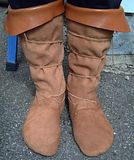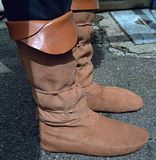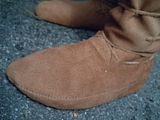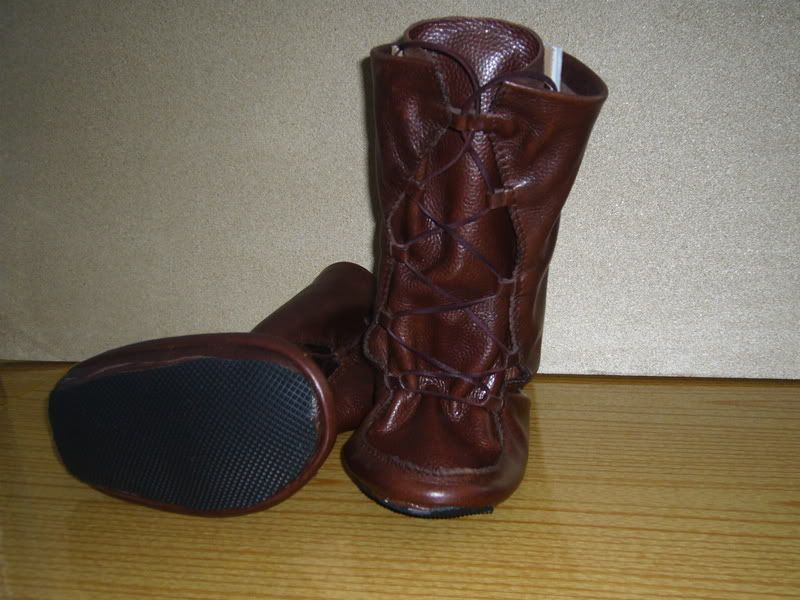Hi not sure where this thread should go really!
Aas you can probably guess from my id im very interested in native american culture.
What i have been trying to do for a few weeks now is way up which style of moccasin would be best for use in the UK.
There are several differnt styles of moccasin dependent on the area/cultural group.
One main style of moccasins which have come to mind is styles worn by the eastern woodland tribes (those tribes from the eastern coast to th appalacian mountains).
These moccasins are made from a single piece of elk/moosehide or deer hide. The moccasins are sewn with a single seam which starts at the tip of the toes and finishes at the front of the ankle. I have made and wore this style of moccasins. Production is easy and a pair of unadorned moccasins can be produced in about an hour. The hide forms both the body of the shoe and the sole. As the climate/terrain on the eastern coast of the usa. The only problem i can forsee with this design is that the sole is only moose hide.
In the past the indians would carry patching leather in ther moccasins to patch holes and it wasnt unusual for new moccasisn to be fabricated on the trail
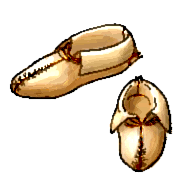
The plains people wore a high top moccasin. This is a long, soled moccasin. The moccasins end just below the knee and traitionally had rawhide soles but it was also common to find thick leather soles. The leather soles would probably more suitable for long use. One draw back is the amount of effort that goes into making these moccasins! It can take around 15hrs to make a pair.
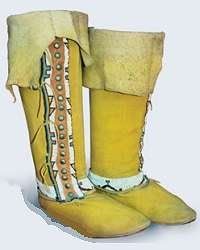
so the question stands
a, woodland moccasins. very easy to make repair and very comfertable quite good on fallen trees and slippery ground.
b.High leg plains moccasins More hardwearing the soles are good on hard or flinty ground but there is a lot of work involved in producing them and they are not simple to make.
Aas you can probably guess from my id im very interested in native american culture.
What i have been trying to do for a few weeks now is way up which style of moccasin would be best for use in the UK.
There are several differnt styles of moccasin dependent on the area/cultural group.
One main style of moccasins which have come to mind is styles worn by the eastern woodland tribes (those tribes from the eastern coast to th appalacian mountains).
These moccasins are made from a single piece of elk/moosehide or deer hide. The moccasins are sewn with a single seam which starts at the tip of the toes and finishes at the front of the ankle. I have made and wore this style of moccasins. Production is easy and a pair of unadorned moccasins can be produced in about an hour. The hide forms both the body of the shoe and the sole. As the climate/terrain on the eastern coast of the usa. The only problem i can forsee with this design is that the sole is only moose hide.
In the past the indians would carry patching leather in ther moccasins to patch holes and it wasnt unusual for new moccasisn to be fabricated on the trail

The plains people wore a high top moccasin. This is a long, soled moccasin. The moccasins end just below the knee and traitionally had rawhide soles but it was also common to find thick leather soles. The leather soles would probably more suitable for long use. One draw back is the amount of effort that goes into making these moccasins! It can take around 15hrs to make a pair.

so the question stands
a, woodland moccasins. very easy to make repair and very comfertable quite good on fallen trees and slippery ground.
b.High leg plains moccasins More hardwearing the soles are good on hard or flinty ground but there is a lot of work involved in producing them and they are not simple to make.

